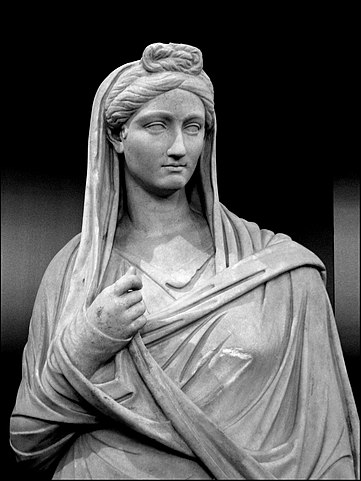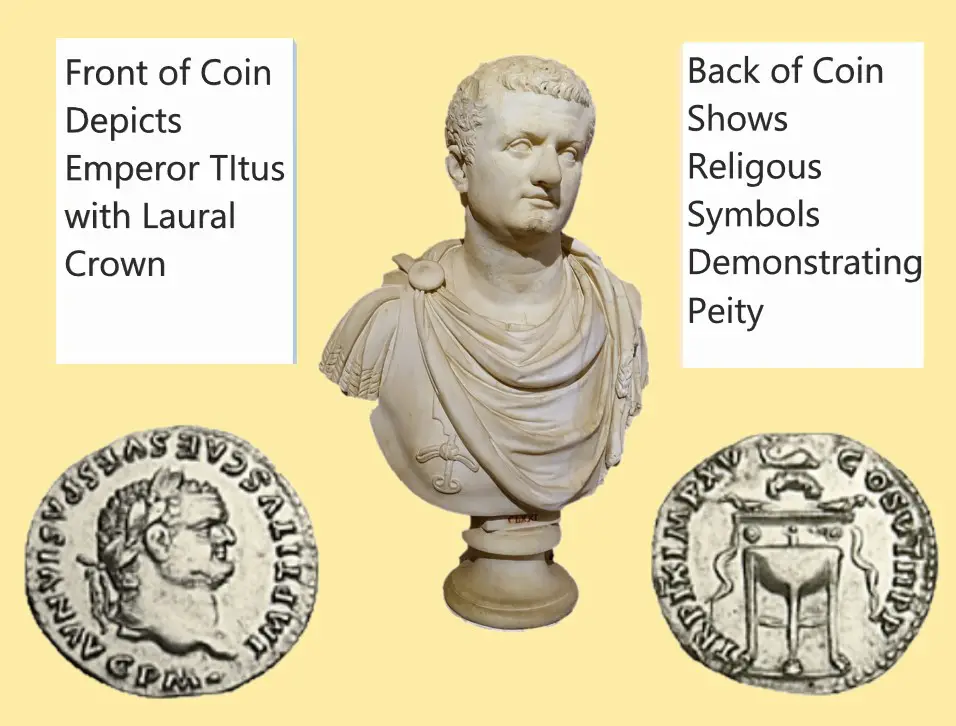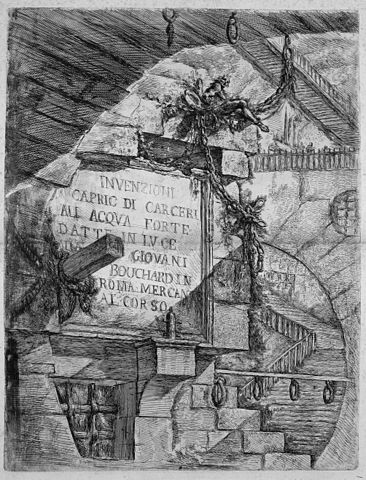
On August 24th, 79 AD the Roman Empire saw one of the deadliest volcano eruptions in human history with the eruption of Mount Vesuvius. At the bottom of this giant mountain was the resort town of Pompeii which was covered with ashfall and pyroclastic surges within minutes after the eruption. Here is how the Roman Empire responded to this natural disaster.
During the disaster of Pompeii the Roman Emperor Titus sent two consuls to repair the town of Pompeii and help the people. This aid was given in the form of financial wealth and a remission of taxes on those in the region for a period of five years.
Roman Emperor Titus had just gotten into power when the eruption of Mount Vesuvius took place in 79 AD. The Roman Senate was watching closely to see how Titus would react and as such Titus was encouraged to give an ample amount of aid to the Roman People. Because of this Titus is remembered today as one of the nicest emperors in the history of Rome.
Here at The History Ace I strive to publish the best history articles on the internet. If at the end of this article you enjoyed it then consider subscribing to the free newsletter and sharing it around the web.
Without further ado; here is everything you will ever need to know about how the Roman Empire responded to the destruction of Pompeii.
The Roman Public Was Devastated and Grieved

The first reaction of the Roman Empire to the destruction of Pompeii was disbelief. This was because of two reasons. First, the death toll of Pompeii was upwards of 20,000 Roman citizens and their families/servants. Second, the city of Pompeii was known to be a resort town that held lots of Senatorial estates.
Even though the Roman people knew the mountain was acting weird several thousands of Romans continued to stay and vacation in the two largest cities; Pompeii and Herculaneum. Sometime between August and October the mountain would explode and cover the Roman people below. From archeological data, it would appear that Pompeii was the more densely populated city with a population of around 15,000. Historians are unsure just how many people were present during the eruption and the range is between 1,500-20,000 people.
While the casualties of Pompeii were tremendous another reason that the Roman people entered into a period of mourning was because of the loss of the Naples region. Located just 100 miles away from Rome itself Pompeii was a major tourist and resort city known for its beaches and luxury entertainment. Several large senatorial estates would have been found in this region and would have been completely destroyed.
These two reasons caused the Roman people to enter into a period of grieving that would have lasted for several months to a year. We know from old engravings on Roman sarcophagi that the Roman people would have dressed in long robes covered in ash and dirt to signify their period of mourning. If you lived in Rome during the events of Pompeii in 79 AD then chances are you would have worn these dark robes and grieved the loss of Pompeii as well.
So the Roman People would have mourned the loss of Pompeii and the Roman casualties from the natural disaster but what did the Roman Empire do? Well fortunately we have several sources on that.
Roman Emperor Titus Responded To The Destruction of Pompeii In Two Ways

Not only did the people of Rome enter into a period of mourning directly after the events of Pompeii the Roman emperor himself was tasked with helping to aid the people of Pompeii.
Almost immediately after the eruption of Mount Vesuvius Emperor Titus sent two consuls to Pompeii to begin to set up the logistics to give the people of Pompeii any help that was needed. This Roman imperial aid came in the form of two major things.
First, the imperial treasury would be used to help rebuild the region of Campania and the city of Pompeii. Those who had survived the destruction of Pompeii and still wished to live there were given the property of those who had perished and had no heirs along with a fixed amount from the imperial treasury. This was an unusual action for the Roman Emperor as normally this land would fall under the control of the imperial household.
Second, the people of Pompeii were to be freed from all tax burdens for the next five years while they repaired the town. This was another unheard thing and demonstrated that Titus was a ‘caring’ emperor that was remembered for his kind actions for centuries afterward. For example, the Roman historian Cassius Dio writes of Emperor Titus’s kindness and generosity almost 100 years after the reign of Titus.
It has been theorized by Roman historians that the reason that Emperor Titus responded so generously in giving aid to Pompeii was because of three reasons. First, Emperor Titus was within the first couple of months of his reign. By responding well to Pompeii Titus was winning over the Roman people and senators who were afraid of another harsh ruler.
Second, it is possible that the Roman people saw the eruption of Mount Vesuvius as punishment for their religious lives. The early Roman Empire was known to be extremely decadent and the city of Pompeii was the pinnacle of this. The entire city served as one giant pleasure compound for the Roman People.
It is possible that Emperor Titus took the opportunity of the destruction of Pompeii to reinforce his role as the pontifex maximus (the leader) of the Roman religion. This is why the image at the top of this section has a coin of Titus with the back relief having religious iconography. It can’t be understated that the Roman people would have handled these coins on a daily basis and seeing the Emperor’s face with religious iconography would have indicated something.
How The Roman People Learned About The Destruction of Pompeii

The spread of knowledge around Rome was extremely fast and efficient for the time. Across the city of Rome, there were formal boards where notices would be put up that went over the major events and news.
These boards were called the Acta Diurna and they were designed to inform the Roman people of any major event that took place in the Empire. On these large whiteboards a government official would walk up and pin a written notice while large crowds of Romans gathered around.
It did not take long for the information from these boards to be spread out across the Roman countryside and city. If the news was particularly important the Roman senate or emperor might send runners out to post the notices on other town’s boards.
Chances are the news of Pompeii’s destruction reached the city of Rome within a couple of hours. The reason why this news would have reached Rome so fast was that nearly 50 years earlier Roman Emperor Augustus created the first Roman post system. On average a Roman postal rider could cover around 155 Roman miles per day which would have easily covered the distance between Rome and Pompeii.
Once this news reached the city it would have been instantly spread out across the Roman people who were known to spread rumors and gossip at a lightning-fast rate. Within one day it is likely that the entirety of the Roman countryside would have known about the destruction of Pompeii.
Conclusion
There you have it; how the Roman Empire responded to the destruction of Pompeii.
In the end, the eruption of Mount Vesuvius in 79 AD was a catastrophic natural disaster for the Roman Empire. Several thousand people lost their lives and the Roman people would remember this event for hundreds of years.
Here at The History Ace I strive to publish the best history articles on the internet. If you enjoyed this aritcle then consider subscribbing to the free newlsetter and sharing around the web.
Further, you can check out some of the other articles below.
The Roman Empire’s Reaction To Pompeii
How did the Roman people and Emperor react to the destruction of Pompeii in 79 AD? Well here is everything you need to know.


